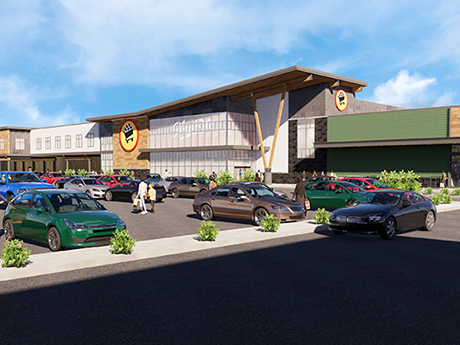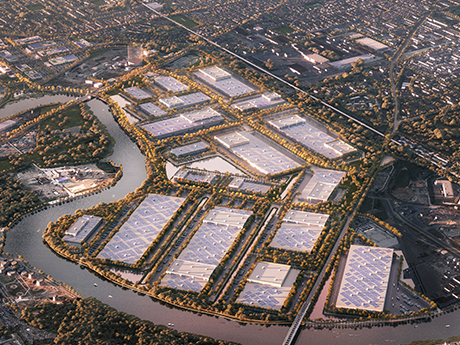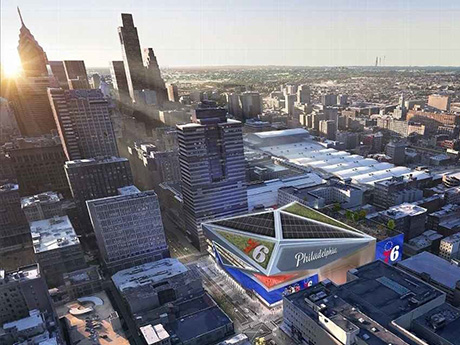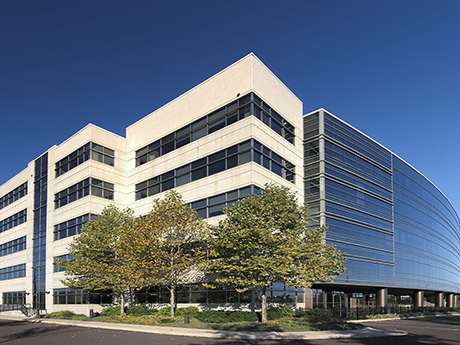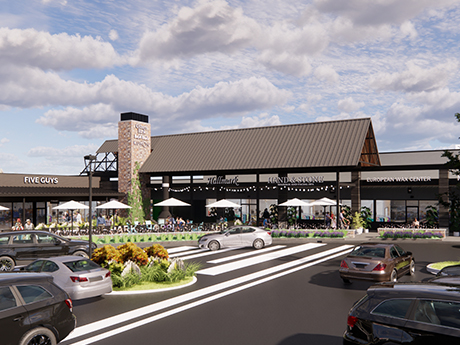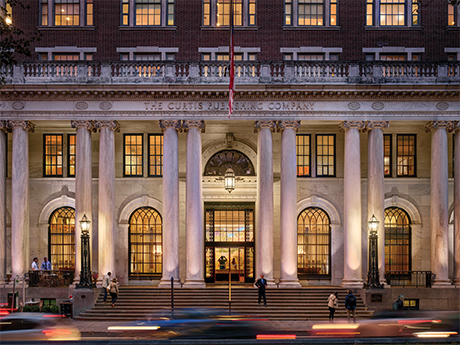By Taylor Williams No matter your size, market and scope of operation, for retail owners and operators, there is no such thing as total immunity from the likes of e-commerce, COVID-19, inflation and interest rate hikes. But there is such a thing as absorbing those socioeconomic hits in stride, learning and evolving from them and re-emerging on significantly more solid ground. And that is largely the path that the Philadelphia retail market has traversed over the past few years. The timing of the pandemic dismantled the launch of Fashion District, the redevelopment of the former Gallery at Market East Mall that should have ushered in a new scene of experience-based, locally merchandised retail in Philadelphia. Retailers and restaurants along Center City District’s main shopping corridors quickly devised solutions to the global healthcare crisis and were returning to normalcy when bad timing once again intervened. This time, it took the form of the Delta variant, which delayed plans to reopen existing stores or launch new ones and erased some of the positive momentum that landlords and tenants had recouped. For their part, suburban retail properties, many of whose performances were bolstered in the short run by pandemic- driven population influxes, are …
Pennsylvania
By Andrew Chused, founding partner, head of investments, Hilco Redevelopment Partners From the nation’s beginning to modern times, Philadelphia has been a bellwether city with a proud legacy of leading the nation to many of its firsts, including the country’s inaugural medical school, library, hospital, business school and stock exchange. In this city of firsts, Hilco Redevelopment Partners (HRP) is unlocking and reinventing a large portion of the city: the former 1,300-acre Philadelphia Energy Solutions (PES) site on the city’s southwest side. Not only is the redevelopment of this site transforming a relic of the city’s industrial age into a new, sustainable economy for the first time, but the project will also transform the way logistics and life sciences companies grow in southwest Philadelphia. An Economic Hub The site, aptly named The Bellwether District, represents a new ecosystem for a variety of tenants, including logistics, e-commerce and life sciences. Located in the shadows of University City and along the Schuylkill River, the project will create over 32,000 jobs and serve as an economic catalyst that drives growth to the city and region for generations to come. Upon its acquisition of the property in June of 2020, HRP quickly began the …
By Taylor Williams Though very much in its infancy, the Philadelphia 76ers’ recent decision to assemble a development team and file a formal proposal for a new arena at the current site of Fashion District Philadelphia has drawn the city’s retail market into speculation on how buildings, operators and streetscapes will be impacted. Known as 76 Place, the $1.3 billion venue would theoretically anchor the Market East corridor that connects Center City to Chinatown and Old City via its location atop the city’s largest public transit hub. The ability to centralize the arrival of fans, shoppers and diners from all cardinal directions, as well as multiple states, automatically sparks excitement for growth opportunities in the world of retail real estate. This project would immediately check that box. “The announcement of the new 76ers arena has generated a lot of discussion in the retail world,” says Steve Gartner, executive vice president at CBRE. “Bringing an arena to downtown Center City, especially one that’s adjacent to a convention center, will allow Philadelphia to hold more concerts and global events, like political conventions, that impact retailers and restaurants. These positive impacts will permeate the fabric of all of downtown.” “The retail community is …
By Marc DeLuca, CEO and eastern regional president, KBS Refreshing office properties with updated amenities is a time-tested strategy for infusing buildings with new life and appealing to future and existing tenants. While an asset’s location is a fixed element and a region’s fundamentals tend to change slowly, amenities are more flexible and can usually be implemented quickly if necessary for immediate impact. A recent report by flexible workspace provider TCC Canada found that many companies and their team members increasingly recognize the benefits of gathering teams in a central workplace. But after more than two years of varying degrees of remote work, it makes sense for property owners to invest in amenities that actually meet the needs and wants of office users — which have recently shifted. So which amenities are the best ones to include in today’s office buildings? As an owner and operator of premier office assets for the last 30 years, KBS has witnessed amenity preferences come and go. We know how to spot a passing fad versus a trend with legs. Based on our expertise in this area, here are a few amenities we see attracting office tenants in the current and emerging environment. Scalable …
By Kari Glinski, vice president of asset management, Federal Realty Investment Trust Philadelphia is known for many things, from being the City of Brotherly Love to a city rich in history, art, culture and food. As a result, the region is desirable for many residents and visitors and has been recognized in real estate circles for its housing and retail development opportunities. Throughout the pandemic, greater Philadelphia has lent itself to commuters, residents, tourists and hybrid employers by providing convenient access to other East Coast cities, vast amenities and outdoor recreation spaces, as well as unique dining, entertainment and shopping experiences. Recognizing the need to continue catering to the remote employees, shopping center owners and developers see ample opportunity across the region, specifically within the inner suburbs. In these locations, there is a great mix of diversity, mature employment bases and irreplaceable real estate where developers can continually create long-term value through blended opportunities. Federal Realty has been reinvesting in the greater Philadelphia and Southern New Jersey region for the past decade, strategically transforming our portfolio. Our company focuses on the ownership, operation and redevelopment of high-quality, retail-focused properties, with a mission to deliver long-term, sustainable growth through investing in …
By Taylor Williams Industrial brokers and developers throughout New Jersey and Eastern Pennsylvania are flush with tenant demand, but the frenetic pace and frequency at which revenues and costs change in this market has introduced a whole new set of operating challenges. In terms of the supply side of the market, developers of industrial product, like those of every other property type, have been squeezed by supply chain disruption. Prices and lead times for ordering key materials change radically and often without warning. Developers who try to circumvent these obstacles by ordering way earlier than normal in the process now run an increased risk of having to take delivery of supplies without having all permits and sources of construction financing in place. Such a misfire in timing can create lags in delivery, potentially alienating tenants needing turnkey space and generating additional short-term costs via storage of the materials before construction begins. In addition, misaligning these timelines can spook potential investors that want the certainty of knowing that a project is moving forward. “We’re buying supplies a year in advance and trying to sync up deliveries of those materials with when we expect to have full project approval,” says Peter Polt, …
By: Jamie Rash, Regional Director, Keystone Development + Investment Talk about a spark. When Spark Therapeutics announced plans at the end of last year to develop a $575 million gene therapy manufacturing plant in Philadelphia, it ignited the city’s evolution into a destination for the largest, most innovative life sciences firms in the world. Over $1 billion in venture capital (VC) investment is pouring into more than 50 Philadelphia life sciences companies that employ some 20,000 people, generating unprecedented demand for lab space. Supply is limited — even with 1 million square feet of lab space in development — and this supply shortage is driving some developers to capitalize on the demand by converting existing building stock. Moving Beyond Meds & Eds Philadelphia is a long-reputed “meds and eds” city, meaning it’s home to anchor institutions of higher learning and world-leading medical facilities that are known for innovation and opportunity. These institutions are major drivers of economic growth throughout the city. Previously, much of the activity in pharmaceuticals and biotechnology occurred in labs in suburban office parks and sprawling corporate campuses. In 2017, the city celebrated two cutting-edge, FDA-approved gene and cell therapies to treat specific types of cancer and …
By Gary Holloway Jr, president, GMH Communities The COVID-19 pandemic served as an accelerator for transforming the Philadelphia multifamily market. Overnight, property owners and managers had to quickly adapt and find new ways to serve their residents while prioritizing their safety and following all of the guidelines from the Centers for Disease Control and Prevention (CDC). As we head into 2022, the pandemic will continue to influence what prospective tenants expect from their apartment communities. Here are three opportunities that multifamily owners should consider as the industry continues to grow and evolve in Philadelphia. WFH is Here to Stay Working from home is not a new trend. However, the pandemic thrust countless residents into remote work situations without warning. This sudden shift in work routines has prompted multifamily developers to rethink which amenities they need to provide now that remote and hybrid work is the norm. At GMH Communities, we are actively growing our amenity offerings to enhance the work-from-home experience. At The Yards at Malvern, one of our newest properties that is located in the suburb of Malvern, residents have access to a robust business center with multiple small and large conference rooms with a Zoom conference room, …
By Richard Gorodesky, SIOR, senior managing director, Colliers International; and Adam Gorodesky, associate, Colliers International Commercial real estate is historically a cyclical business. There is a fairly predictable pattern of oversupply, recession, recovery and finally expansion before starting all over again. While the cycle isn’t always this cleanly defined, it generally follows this pattern, and has done so for decades. While this formula can be very useful for understanding the cycles and what occurs during them, it lacks one key ingredient: timing. There’s no way to accurately predict when one stage is ending or how long each phase will last. On a basic level, like in all markets, the commercial real estate market cycle responds to the balance, imbalance and rebalancing of supply and demand. The factors that influence the market and determine the length of each cycle are and will continue to be moving targets. Demand Overview While e-commerce represents about 18 percent of retail sales today, and it is widely believed in commercial real estate circles that that number could grow to 30 percent by 2025. Amazon, online retailers and other e-commerce companies have not only fueled demand for last-mile distribution facilities, which are necessary to reach as …
By Taylor Williams Relative to a year ago, life is much better right now for many retailers and restaurants in Philadelphia’s Center City district, but the recent surge of transmission of the Delta variant is keeping a key ingredient of the demand recipe at bay: office users. According to CBRE’s second-quarter report on the Philadelphia office market, the most current data available at the time of this writing, the marketwide vacancy rate was 18.9 percent at the end of that period. Specifically with regard to the downtown area, the largest office submarket by far in terms of inventory, vacancy stood at 14.7 percent at the end of the second quarter. Office metrics aside, as Philadelphia grappled with the novelty of COVID-19 in 2020, its merchants and food purveyors adapted, adjusting inventory levels, rolling out improvised outdoor seating areas and expanding takeout and curbside pick-up options. The colder months saw the introduction of igloos — enclosed, heated nooks for private dining — as well as larger, city-led efforts to clear major retail corridors for street-side experiences, known locally as “streateries.” The innovations saved many-a-retailer and restaurant and are likely here to continue through 2021 and beyond. Yet within the city’s most …
Newer Posts


